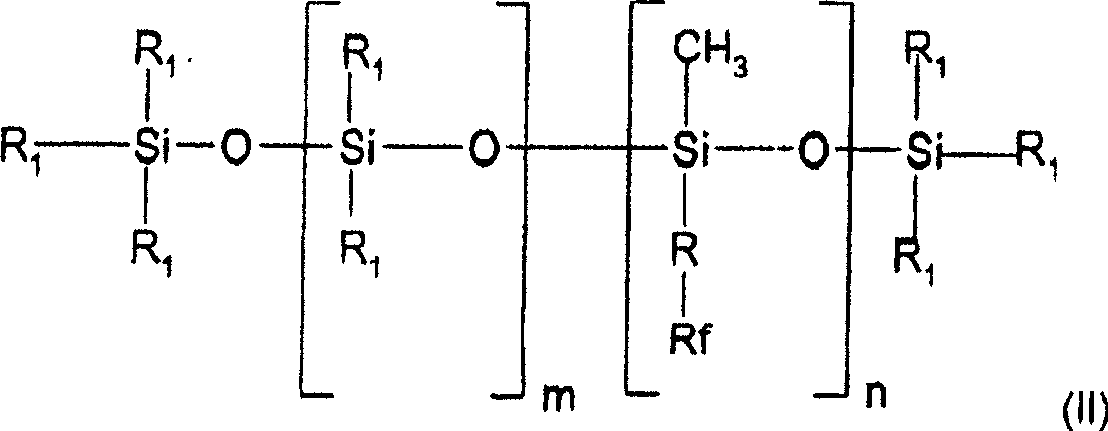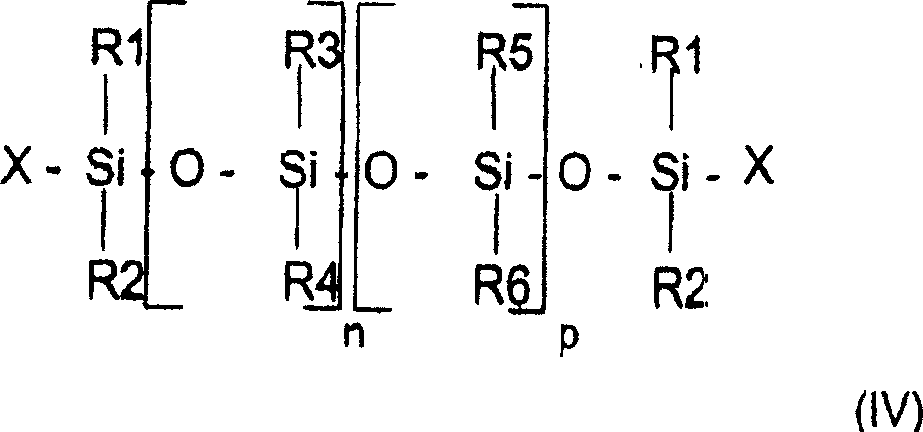Cosmetic composition containing polymer granules, acid and polyol ester dispersion
A technology of polymer particles and compositions, applied in the field of sucrose esters, compositions for caring or repairing keratin substances, to achieve clear contours, aggravate unglamorous feeling, and good application properties
- Summary
- Abstract
- Description
- Claims
- Application Information
AI Technical Summary
Problems solved by technology
Method used
Image
Examples
Embodiment 1
[0317] Example 1: Polymer Dispersion
[0318] Adopt the method in the embodiment 1 of EP-A-749 746, replace the heptane wherein with isododecane, prepare methyl acrylate and the non-crosslinked copolymer that acrylic acid synthesizes with the ratio of 95 / 5 in isododecane Dispersion in alkanes. This resulted in a dispersion of poly(methyl acrylate / acrylic acid) particles in isododecane surface-stabilized by a block polystyrene / co(ethylene-propylene) diblock copolymer sold as Krraton G1701. body with a solids content of 25% by weight.
Embodiment 2
[0319] Example 2: Lipstick
[0320] polyethylene wax
[0321] (weight average molecular weight: 500) 10.5%
[0322] straight chain fatty alcohol
[0323] (Performacol 550 alcohol, sold by New Phase Technologies) 2.5%
[0324]Dispersion in Example 1 68%
[0325] Sucrose Acetate Isobutyrate
[0326] (Eastman $AIB, sold by Eastman Chemical) 5%
[0327] Pigment paste 13.5%
[0328] Spice 0.5%
[0329] Pour polyethylene wax, C30-C50 alcohol and pigment paste into a heating vessel and heat to 100°C with magnetic stirring to obtain a homogeneous mixture. The pigment paste composition was 70% pigment, 1% polystearate (12-hydroxystearate) and 29% hydrogenated polyisobutylene.
[0330] Sucrose acetate isobutyrate and the dispersion of Example 1 were then added while maintaining the temperature and stirring. The composition was cast into a mold at 40°C, and the mold was cooled at -20°C for thirty minutes. The sticks are then unmoulded. The resulting sticks are uniform in color...
Embodiment 3
[0331] Example 3: Lipstick as First Composition
[0332] Polystyrene / poly(ethylene-propylene)
[0333] Kraton G-1650E (sold by Kraton) 0.5%
[0334] Dispersion of Example 1 65%
[0335] polycaprolactone
[0336] (Capa 2125, manufactured by Solvay) 10%
[0337] Sucrose Acetate Isobutyrate
[0338] (Eastman $AIB, sold by Eastman Chemical) 10%
[0339] Pigment paste 13.5%
[0340] Aromatic amount
[0341] Appropriate amount of preservatives
[0342] The polycaprolactone was melted at 100° C., and then the pigment paste with the same components as in Example 2 was added under stirring. Subsequently, the other components are added until a homogeneous mixture is formed. Subsequently, the mixture was cooled to ambient temperature and filled into small tanks.
PUM
| Property | Measurement | Unit |
|---|---|---|
| particle size | aaaaa | aaaaa |
| melting point | aaaaa | aaaaa |
| particle diameter | aaaaa | aaaaa |
Abstract
Description
Claims
Application Information
 Login to View More
Login to View More - R&D
- Intellectual Property
- Life Sciences
- Materials
- Tech Scout
- Unparalleled Data Quality
- Higher Quality Content
- 60% Fewer Hallucinations
Browse by: Latest US Patents, China's latest patents, Technical Efficacy Thesaurus, Application Domain, Technology Topic, Popular Technical Reports.
© 2025 PatSnap. All rights reserved.Legal|Privacy policy|Modern Slavery Act Transparency Statement|Sitemap|About US| Contact US: help@patsnap.com



